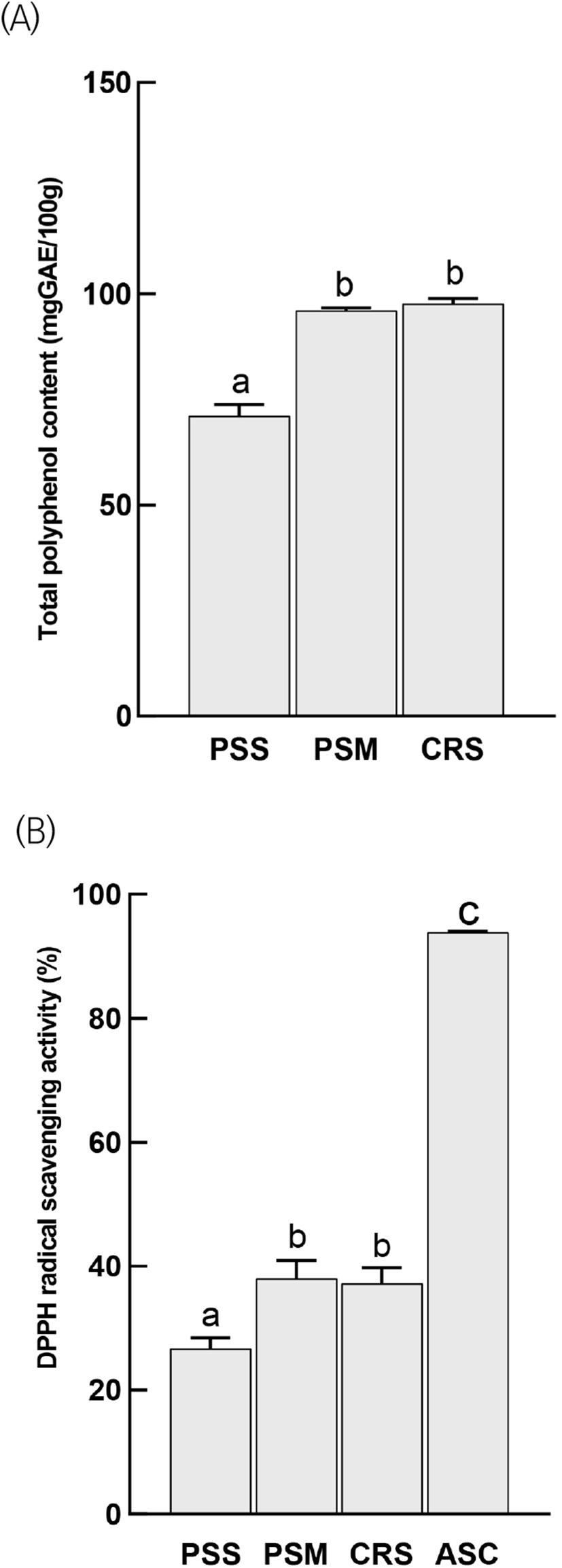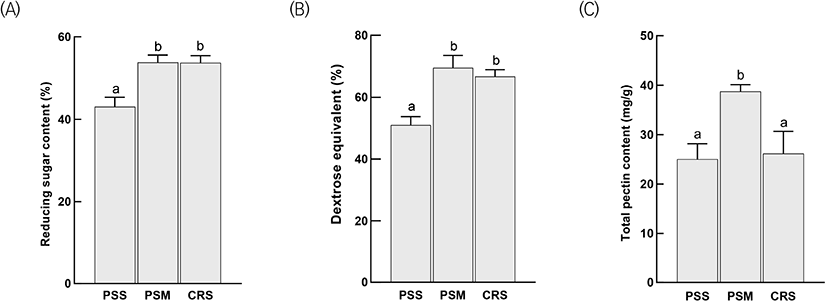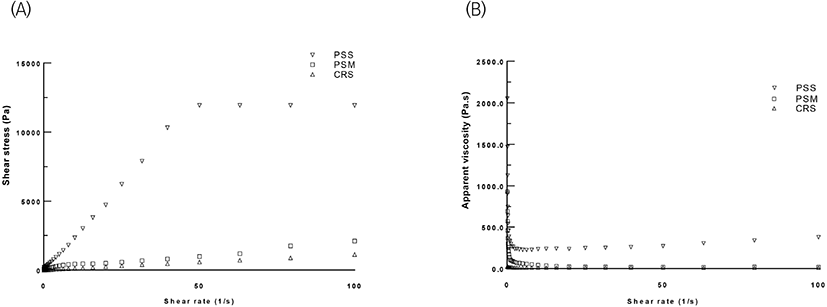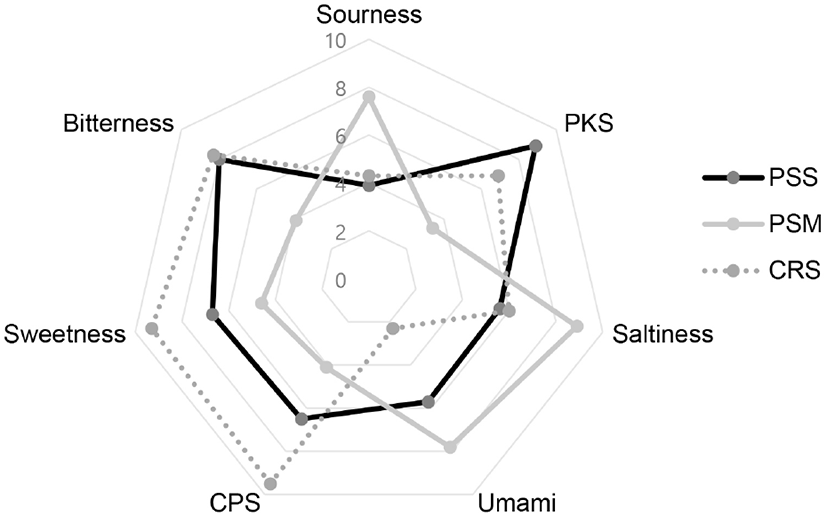1. Introduction
The potato (Solanum tuberosum) is a starchy, herbaceous annual crop from the Solanaceae family that consists mainly of starch (60-80% of the total dry matter) (Burlingame et al., 2009). It is one of the most important crops in the world, as it is grown in 125 countries and consumed daily by more than one billion people (Bhattarai and Swarnima, 2016). Substantial food loss has been observed in the food value chain of potatoes and other roots and tubers and is associated with limited postharvest handling technology (Tadesse et al., 2018), especially in developing nations. This waste of valuable food resources can be resolved by the addition of value-added product alternatives to the value chain. Such products are the result of further processing of raw materials to increase product shelf life. Syrup production from potatoes could be one viable option for adding value. The syrup is a purified and concentrated mixture of saccharides resulting from starch hydrolysis and contains a dry matter and dextrose equivalent above 70% and 20%, respectively, and a sulfated ash content below 1% (Hull, 2010). Potatoes and other roots and tubers with high starch content are rarely used in the syrup industry. Cereals such as rice and maize are the most common raw materials used to manufacture syrup (Lee et al., 2012; Park and Na, 2005). However, other starchy crops have the potential to serve as raw materials for syrup production (Johnson et al., 2010; Ojuwemi et al., 2018).
Glucose syrups, which are widely used as sweeteners and thickening agents during the production of soft drinks and various confectioneries, are made from starch by either enzymatic or acidic hydrolysis (Johnson et al., 2010). Starch slurry is heated to 105°C for gelatinization and is then liquefied using a thermostable α-amylase enzyme at high temperatures. Subsequently, the liquefied slurry undergoes saccharification by glucoamylase at temperatures between 50°C and 60°C (Uthumporn et al., 2010).
Hypsizygus marmoreus is an industrialized edible mushroom and a popular ingredient in Asian cuisine that has been reported to have antitumor, antibacterial, and antifungal properties (Min et al., 2018). Superfine powder is produced through grinding, resulting in a particle diameter of less than 10 μm. We previously demonstrated that superfine grinding improves the physicochemical and morphological properties of mushroom powder (MP) (Hitayezu and Kang, 2021). In contrast to syrups manufactured from grains (such as rice and sorghum), starch syrups may offer poorer functional characteristics and nutritional benefits (Chen et al., 2022). Supplementation with mushroom powder can help overcome these limitations. Numerous studies have incorporated mushroom powder in the processing of other food products to increase the total phenolic content and antioxidant activity of cereal products (Lu et al., 2018), and improve the viscoelastic behavior of meat emulsions (Kurt and Genccelep, 2018). Furthermore, the addition of oyster mushroom powder reportedly ameliorates rheological properties, such as peak viscosity, softness, and the mixing tolerance index of bakery products (Majeed et al., 2017).
Available evidence suggests that MP improves the quality attributes of different food products. Therefore, in this study, we anticipated that H. marmoreus MP would ameliorate the physicochemical and rheological properties of potato-derived starch syrups.
2. Materials and methods
Commercial-grade potato starch (99.9% purity) and malt barley were purchased from a local mart (Hanaro Mart, Gangneung, Korea). Dried H. marmoreus mushrooms, obtained from World Farm Co., Ltd. (Yangyang city, Korea), were first ground into a coarse powder using a cutter mill and then finely ground using a blade mill followed by jet milling (Jet mill, Korea Powder System Co., Ltd., Incheon, Korea) to produce superfine powder (average median diameter, 4.791 μm). The ingredients were mixed to prepare potato starch syrup samples (PSS, potato starch syrup without mushroom powder; PSM, potato starch syrup with 3% mushroom powder) (Table 1). Termamyl® 2X enzyme purchased from Novozymes® (Novozymes A/S, Bagsvaerd, Denmark) was used for the liquefaction of potato starch slurry at 90-100°C for 3 h. Malt barley was added during the saccharification step at 55°C for 4 h. The saccharified mixture was then centrifuged at 3,000 ×g for 5 min, and the resultant potato starch syrup samples were manually concentrated (by heating) to a total solid content of approximately 80 °Brix. Potato starch syrup and commercial rice syrup (CRS) samples were stored in a refrigerator (4°C) for further analysis.
| Ingredients | Syrups | |
|---|---|---|
| PSS1) | PSM | |
| Potato starch (g) | 400 | 400 |
| H. marmoreus MP (g) | 0 | 12 |
| α-Amylase (mL) | 3 | 3 |
| Barley malt (g) | 30 | 30 |
| Distilled water (L) | 6 | 6 |
All the chemical reagents used in this study were of analytical grade. Folin-Ciocalteu reagent, sodium carbonate, 2,2-diphenyl-1-picryl-hydrazyl (DPPH), sulfuric acid, carbazole, dinitrosalicylic acid, sodium hydroxide, galacturonic acid, phenol, gallic acid, and glucose were purchased from Sigma-Aldrich (St Louis, MO). Electonic tongue reagents (hydrochloric acid, sodium chloride, and sodium-L-glutamate) were obtained from Alpha MOS (Toulouse, France). Ascorbic acid, potassium sodium tartrate tetrahydrate (Rochelle salt), and potassium disulfite were purchased from Showa Co. (Tokyo, Japan), Kanto Chemical Co. (Tokyo, Japan), and Oriental Chemical Industries Co. (Seoul, Korea), respectively.
The total polyphenol content of syrup samples was determined as described by Pinto et al. (2007), with minor modifications. Briefly, syrup samples (0.25 mL), Folin-Ciocalteu reagent (0.25 mL), and distilled water (2 mL) were vortex-mixed for 30 s and then incubated at 25°C for 3 min, followed by the addition of 20% Na2CO3 (0.25 mL) and heating at 37°C for 30 min. The absorbance was measured at 750 nm using a Cary 8454 UV-Vis spectrophotometer (Agilent Technologies Inc., Santa Clara, CA, USA) and compared with a calibration curve for gallic acid (R2=0.998).
The radical scavenging activity of fresh DPPH was analyzed as described by Blois (1958). Syrup samples (0.2 mL) were vortex-mixed with 0.2 mM 1,1-diphenyl-2-picrylhydrazyl (DPPH) (0.8 mL) for 30 s, and then incubated in dark for 10 min at 25°C. Ascorbic acid (0.05%) was used as the positive control, and absorbance was obtained at 525 nm using a Cary 8454 UV-Vis spectrophotometer.
The total pectin content of the syrup samples was determined as described by McComb and McCready (1952). Briefly, a mixture of sulfuric acid (1.2 mL) and syrup sample (0.2 mL) was heated at 85°C for 5 min in a water bath. The samples were cooled, vortexed with 0.1% carbazole (0.1 mL) and incubated for 15 min at 25°C. Absorbance was measured at 525 nm using a Cary 8454 UV-Vis spectrophotometer and compared with a galacturonic acid standard curve (R2=0.952).
The pH of syrup samples was measured using the method reported by Lee et al. (2016) using a pH meter (pH 210, Hanna, Woonsocket, RI, USA), and the total soluble solid content was measured using a digital pocket refractometer (Atago, Ltd., Tokyo, Japan) (Eshkabilov et al., 2021). Light transmittance was analyzed as described by Wee et al. (2016) and measured using a Cary 8454 UV-Vis spectrophotometer at 535 nm. Absorbance values were converted to percentage transmittance (% T) using Beer’s law:
Where A is the absorbance value and T is the transmittance value.
The reducing sugar content of syrup samples was quantified using the dinitrosalicylic acid (DNS) method, as described by Negrulescu et al. (2012) with slight modifications. DNS reagent comprising 1% 3,5-dinitrosalicylic acid (DNS), 40% Rochelle salt, 0.2% phenol, 0.5% potassium disulfide, and 1.5% sodium hydroxide was prepared. Then, 3 mL of the DNS reagent was vortex-mixed with diluted syrup samples (1 mL sample diluted to 3 mL in distilled water), and the mixture was heated for 5 min in a boiling water bath and then rapidly cooled to 25°C. The absorbance was measured at 540 nm using a Cary 8454 UV-Vis spectrophotometer and compared with a glucose calibration curve (R2= 0.995). Dextrose equivalent (DE) was measured using the method described by the KFDA (2019).
Rheological characteristics of the syrup samples were evaluated using an AR2000 rheometer (TA Instruments Inc., New Castle, DE, USA), as described by Lv et al. (2017). Samples were placed in a rheometer with a 60 mm diameter/2° angle cone plate for 1 min at a constant temperature of 25°C, then continuously sheared from 0.1 to 100 S−1. The flow curve indicating the effects of the shear rate on the shear stress and viscosity of the syrup samples was created and analyzed using statistical software, as stated in the data analysis section.
The taste characteristics of the syrup samples were determined as described by Dong et al. (2019) using an ASTREE II electronic tongue (E-tongue) (Alpha M.O.S, Toulouse, France) equipped with an auto-sampler and sensors: PKS and CPS (to detect complex taste) (Han et al., 2021), AHS (sourness), CTS (saltiness), NMS (umami), ANS (sweetness), and SCS (bitterness). The tongue sensors and the diagnostic system were calibrated using 0.01 M hydrochloric acid, 0.01 M sodium chloride, and 0.01 M sodium glutamate before the experiment. To determine taste properties, all syrup samples were diluted to 10,000 ppm using double-distilled water and analyzed in five replicates (25 mL each). The analytical parameters were as follows: 0 s delay, 120 s acquisition, 1 s intervals, stirring rate of 1, and an acquisition period of 1. After analyzing each sample, the sensors were automatically rinsed with 25 mL double-distilled water. E-tongue results were analyzed using statistical software embedded in the ASTREE II electronic tongue.
Samples were analyzed in triplicate unless indicated otherwise, and data were statistically evaluated using one-way analysis of variance (ANOVA) and Duncan tests using SPSS v. 25.0, (IBM Corp., Armonk, NY, USA). Statistical graphs were created using GraphPad Prism 9 (GraphPad Software Inc., San Diego, CA, USA), and values were considered statistically significant at p<0.05.
3. Results and discussion
Fig. 1 summarizes the effects of 3% mushroom powder (MP) supplementation on the total polyphenol content and DPPH radical scavenging activity of syrup samples. Adding MP to potato starch syrup significantly increased the total polyphenol content (96.08±0.45 mg GAE/100 g, Fig. 1(A)). The trends of DPPH radical scavenging activity and total polyphenols were similar, with the highest score being 38.03±2.38% for PSM. The positive control (0.05% ascorbic acid) showed the highest DPPH radical scavenging activity (93.89%, Fig. 1(B)). The total polyphenol content and DPPH radical scavenging activity of CRS did not significantly differ from those of PSM (97.62±1.05 mg GAE/100 g and 37.17 ±2.13%, respectively). Previously, other researchers studied the impact of supplementing 3% mushroom powder to various food products such as rice jochung (Korean grain syrup), sulgidduk (Korean white steamed rice cake), and bakery products (Choi, 2010; Majeed et al., 2017; Park and Na, 2005). Although studies on the incorporation of H. marmoreus or any other MP in syrup products are lacking, the effects of MP on other products are known. Kim and Chung (2017) reported that Pleurotus eryngii addition to yanggaeng (Korean sweet red bean jelly) increased total polyphenol content and DPPH radical scavenging activity. Our findings were consistent with those of Wee et al. (2016), who found that the DPPH radical scavenging activity of jochung was 20.4-50.3%. Moreover, the incorporation of mushroom powders (Agaricus bisporus, Lentinula edodes, and Boletus edulis) into bread samples enhanced their antioxidant activity, including DPPH radical scavenging activity and oxygen radical absorbance capacity (Lu et al., 2021).

Reducing sugars comprise monosaccharides (such as glucose and fructose) and some disaccharides (such as maltose and lactose) with aldehyde or ketone groups (Hernández-López et al., 2020). The DNS method was used to determine the reducing sugar content. Adding H. marmoreus MP to potato syrup increased the reducing sugar content (PSM vs. PSS: 55.64±2.6% vs. 43.06±1.87%; Fig. 2(A)), and the change in dextrose equivalent showed a similar trend (Fig. 2(B)). Furthermore, supplementing PSS with MP significantly increased its total pectin content from 25.04±2.53 to 38.74±1.11 mg/100 g for PSS and PSM, respectively. Total pectin values for CRS and PSS were not statistically different (Fig. 2(C)). The obtained findings were in line with previous studies wherein reducing sugar content was increased from 38.68% to 44.66% (Kang and Shin, 2012) and from 39.92 to 40.46% (Lee et al., 2012), for rice jochung. Similarly, the fortification of rice jochung, ketchup, and jam with MPs derived from L. edodes, A. bisporus, and P. ostreatus, respectively, resulted in increased levels of reducing sugars (Kumar et al., 2021; Park and Na, 2005). Moreover, the addition of MPs to yogurt samples ameliorated their reducing sugar content (Khusniati et al., 2021). However, other studies have reported that the addition of MP to various foods, such as pasta, resulted in an overall reduction in their reducing sugar content (Lu et al., 2018). In this study, the addition of superfine MP increased the total pectin content of PSM. Kadnikova et al. (2015) and Islam et al. (2022) reported that the pectin content of MPs is as high as 7.4% and 8.11%, respectively. Therefore, supplementing food products with MP is a reliable method to increase pectin content.

Table 2 summarizes the pH, total soluble solids (TSS), and light transmittance results. TSS values were 83.45±1.15, 80.07±1.16, and 80.43±0.17 for PS, PSM, and CRS, respectively. The addition of MP significantly reduced the pH of PSS. The pH of all samples ranged between 5.66±0.01 and 5.91±0.01. For the light transmittance, CRS had the highest value (92.66±0.61), followed by PSS and PSM with 46.34±1.05 and 44.24±0.24, respectively. Light transmittance refers to the number of light molecules passing through a transparent material. CRS exhibited the highest light transmission. The addition of MP to syrups intensified their brown color, which in turn lowered their light transmittance values. The brown color of the potato starch syrups was probably due to the Maillard reaction, as discussed in the taste characteristics section. Majeed et al. (2017) reported similar findings when bakery products were supplemented with oyster mushroom powder. Wee et al. (2016) reported a light transmittance of 56.40%, TSS of 80 °Brix, and pH of 6.25 for processed rice jochung.
| Samples1) | pH | Total soluble solids (°Brix) | Light transmittance |
|---|---|---|---|
| PSS | 5.72±0.01b | 83.45±1.15b | 46.34±1.05b |
| PSM | 5.66±0.01a | 80.07±1.16a | 44.24±0.24a |
| CRS | 5.91±0.01c | 80.43±0.17a | 92.66±0.61c |
PSS, potato starch syrup without mushroom powder; PSM, potato starch syrup with 3% mushroom powder; CRS, commercial rice syrup.
Means±SD (n=3) with different superscripts in the same column are significantly different at p<0.05.
Different lowercase letters in each column are significantly different at p<0.05.
The viscosity of fluid foods is an important parameter because it indicates their flow behavior. Rheological behaviors affect consumers’ willingness to choose and continuously use syrup products (Dominque et al., 2013). Fig. 3 shows the effects of the shear rate on the shear stress and viscosity of the syrup samples. All the samples were sheared from 0 to 100 S−1, and the shear stress increased as the shear rate increased. According to the flow curve, the initial and final shear stresses of the potato starch syrup were higher for PSS than for the corresponding sample supplemented with MP. However, CRS had the lowest shear stress values among all the analyzed syrups (Fig. 3(A)). In contrast, the apparent viscosity of syrup samples decreased with increasing shear rate, indicating that all syrup samples were non-Newtonian fluids with shear-thinning behavior. Shear-thinning fluids, also known as pseudo-plastics, show lower viscosity when shaken or stirred because of their disrupted network structure (Dominque et al., 2013). The CRS sample had the lowest viscosity of all the samples at the same shear rate. However, the addition of MP reduced the viscosity of the potato starch syrups (PSM<PSS, Fig. 3(B)). While there is little or no available literature on the influence of MP on the rheological properties of syrup products, several studies have evaluated the effect of mushrooms on other food samples. Zhou et al. (2017) reported that the addition of Auricularia auricula-judae derived polysaccharides to yam starch resulted in greater pseudoplasticity. In addition, pasting viscosity values of sorghum biscuits were greatly reduced following the addition of shiitake (L. edodes), and the addition of P. eryngii powder decreased the peak viscosity of dough during cookie processing (Biao et al., 2020; Tu et al., 2022). The reduced viscosity was attributed to shiitake dietary fibers, which inhibited amylose leaching and granule swelling. Based on these findings, we can conclude that H. marmoreus fibers reduce the viscosity of PSM, thereby enhancing its shearthinning behavior.

Electronic tongues use an electrochemical sensor system to characterize the taste properties of samples and conduct repetitive analyses of liquid food samples, allowing the reproducibility of measurements. It is hard to achieve repeated measurements consistently when human taste testers are used, mainly because their receptor organs may become saturated after tasting several food samples, which reduces their sensitivity and objectivity (Diaz and Acevedo, 2014). Thus, the ASTREE II electronic tongue was used to determine the taste characteristics of the syrup samples supplemented with MP (Fig. 4). The test findings indicated that the addition of MP enriched the umami, saltiness, and sourness scores of PSM, and decreased bitterness and sweetness scores. However, CRS ranked highest in sweetness and bitterness scores, followed by PSS. Previous E-tongue analyses have indicated that the taste properties of MP are characterized by high sweetness and umami taste scores (Hitayezu and Kang, 2021; Zhao et al., 2019) and these properties are enhanced by superfine grinding. However, we observed a reduction in the sweetness score of PSM samples in our study. The thermal processing may have caused these changes. Indeed, it has been reported that roast flavors increase and sweet flavors decrease owing to the decomposition of sugars, free amino acids, and fatty acids during the Maillard reaction (Hong et al., 2022). Liu et al. (2017) indicated that heat processing reduced sweet and bitter amino acids and highlighted a negative correlation between sweet and bitter amino acids and amino acids associated with saltiness and umami flavors. Similarly, in this study, the addition of MP resulted in an increase in saltiness and umami flavors and a decrease in sweetness and bitterness taste characteristics of PSM. Overall, heat treatment and the Maillard reaction were responsible for the changes observed in the taste properties of potato starch syrup supplemented with MP.

4. Conclusions
In conclusion, this study revealed that potato starch is a potential raw material for syrup processing and highlights the beneficial effects of adding superfine H. marmoreus MP to potato starch syrup. Our findings showed that MP addition significantly improved the physicochemical characteristics of potato starch syrup, such as total polyphenol content, total pectin content, reducing sugar content, DPPH radical scavenging activity, and dextrose equivalent. Moreover, the rheological properties of potato starch syrup were greatly improved. Analysis of taste properties using an electronic tongue revealed that adding MP reduced the sweetness and increased the umami taste scores of the syrup samples. Superfine H. marmoreus MP added to other starch syrups, especially those manufactured from roots and tubers, may enrich their quality characteristics. However, further investigations are required to optimize the processing conditions for potato starch syrup.
